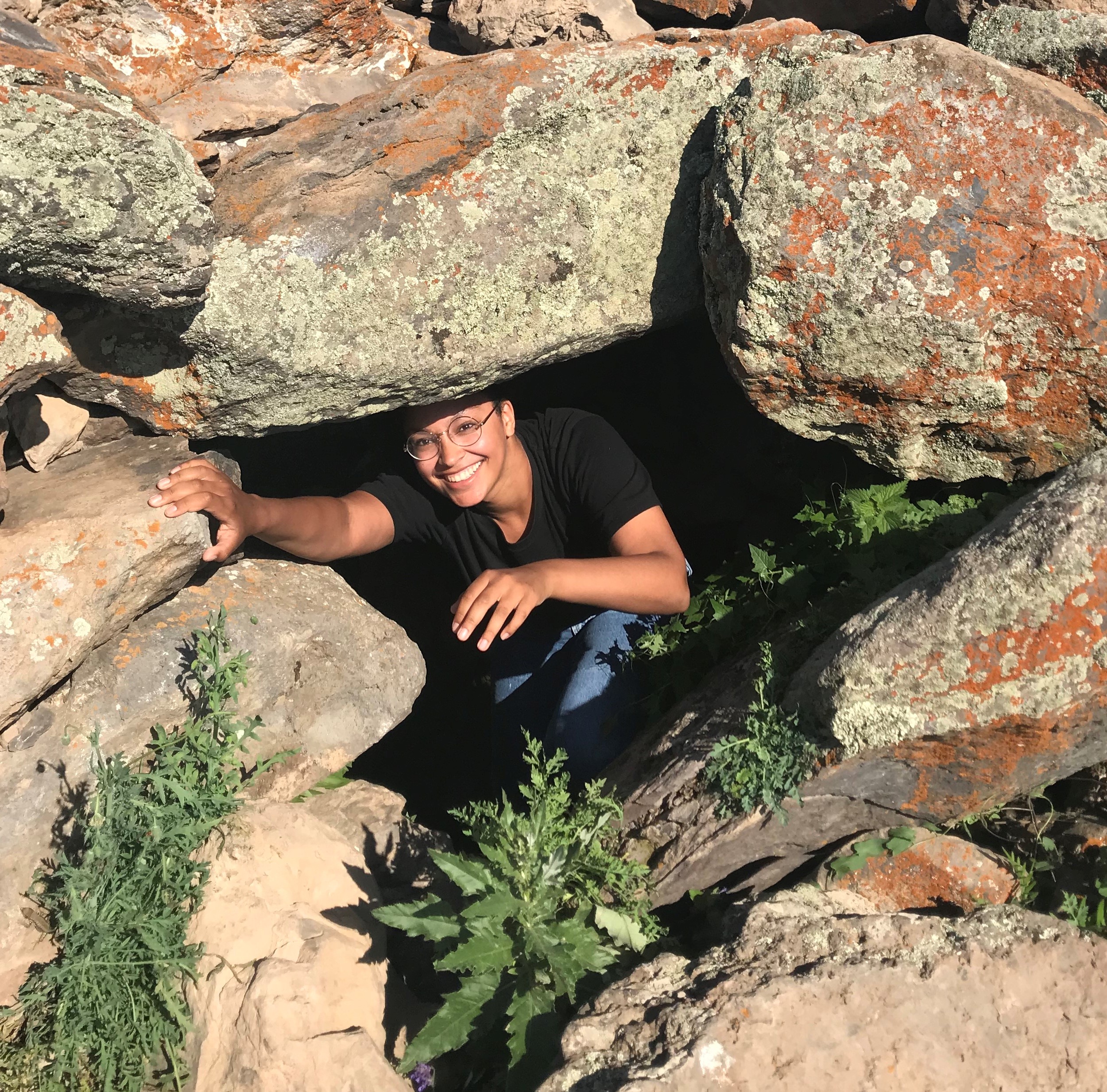Digital Archaeology
Malkia Okech, C’19, uses digital technology to gain insight into ancient civilizations.
Malkia Okech, C’19, has been enthralled with ancient Egypt for as long as she can remember. She recalls childhood books aplenty on mummies, the pyramids, and the mystery of ancient civilizations.
Ancient Egypt still holds a powerful allure for Okech. Now she is a Near Eastern Studies major, with minors in digital humanities and fine arts, and a focus on the intersection between archaeology and technology.
“The disciplines are very much intertwined. I am interested in the utilization of technology to make research efforts more transparent and accessible,” says Okech, who is a student exhibition intern at Penn Museum.
"It’s not to be flashy and entertaining. It’s about being interactive and getting people who visit museums to be part of the archeological process. There’s a place for creating digital immersive experiences.”
Okech specifically chose Penn because of the overlap between the classroom and the Museum of Archaeology and Anthropology. “A lot of professors make the effort to go to the museum and show students artifacts and how to handle them,” she says.
In her sophomore year, she 3-D-scanned pottery from Iraq. “I wanted to find a broken pot that was being kept in the museum’s storage,” she explains. “I individually scanned the pieces and stitched it together, and rebuilt it, using 3D modeling software. Then I animated it so that you could see the pieces coming apart, and together again.”
Okech took courses with Peter Cobb, Kowalski Family Teaching Specialist for Digital Archaeology, Classical Studies and the Center for the Analysis of Archaeological Materials.
“Thanks to Professor Cobb, I had the opportunity to learn how to fly a drone, 3-D scan, 3-D model, design databases, use GIS (geographic information system) software, among other enjoyable and useful technical/digital skills that archaeologists have begun to use. He was the one who invited me to work with him in Armenia due to these course experiences.”
Okech’s field research in Armenia took place this past June, when she used technology including a custom app to pinpoint where artifacts are found, drone photography, and 3-D scanning for pottery shards.
This fall, Okech will work on a Virtual Reality project for Cobb using data from the survey in Armenia.
She says that one of her most difficult, yet rewarding, academic challenges has been practicing ancient Egyptian hieroglyphs with David Silverman, Eckley Brinton Coxe Jr. Professor and Curator of Egyptology. “I have been in so many classes with Dr. Silverman over the course of my three, going into four, years at Penn, and he has watched me grow as a student and supported me along the way.”
After Penn, Okech aspires to work in the tech field for a brief period of time, possibly doing database work, GIS or programming, and then go on to earn a master's degree, and eventually a PhD. She’s especially intrigued by the nuances of social stratification of ancient Egypt.
“A very small percentage of ancient Egypt has been excavated. We know a lot about the elite culture of Egypt, but what about the other classes, the common life of Egypt?” she asks. “The nuances of social stratification are difficult to define because of a lack of artifacts. They weren’t covered in gold! One thing we do have is pottery, studying ceramics. You can see artisanal value, everyday life.”
“Objects and artifacts in their own way have agency. A lot of different cultures might view something that is inanimate differently. With Egypt, magic is quite important. Objects might have magical properties. Ancient civilizations had rich material cultures. From an anthropological viewpoint, objects hold power, meaning and interpretation.”



